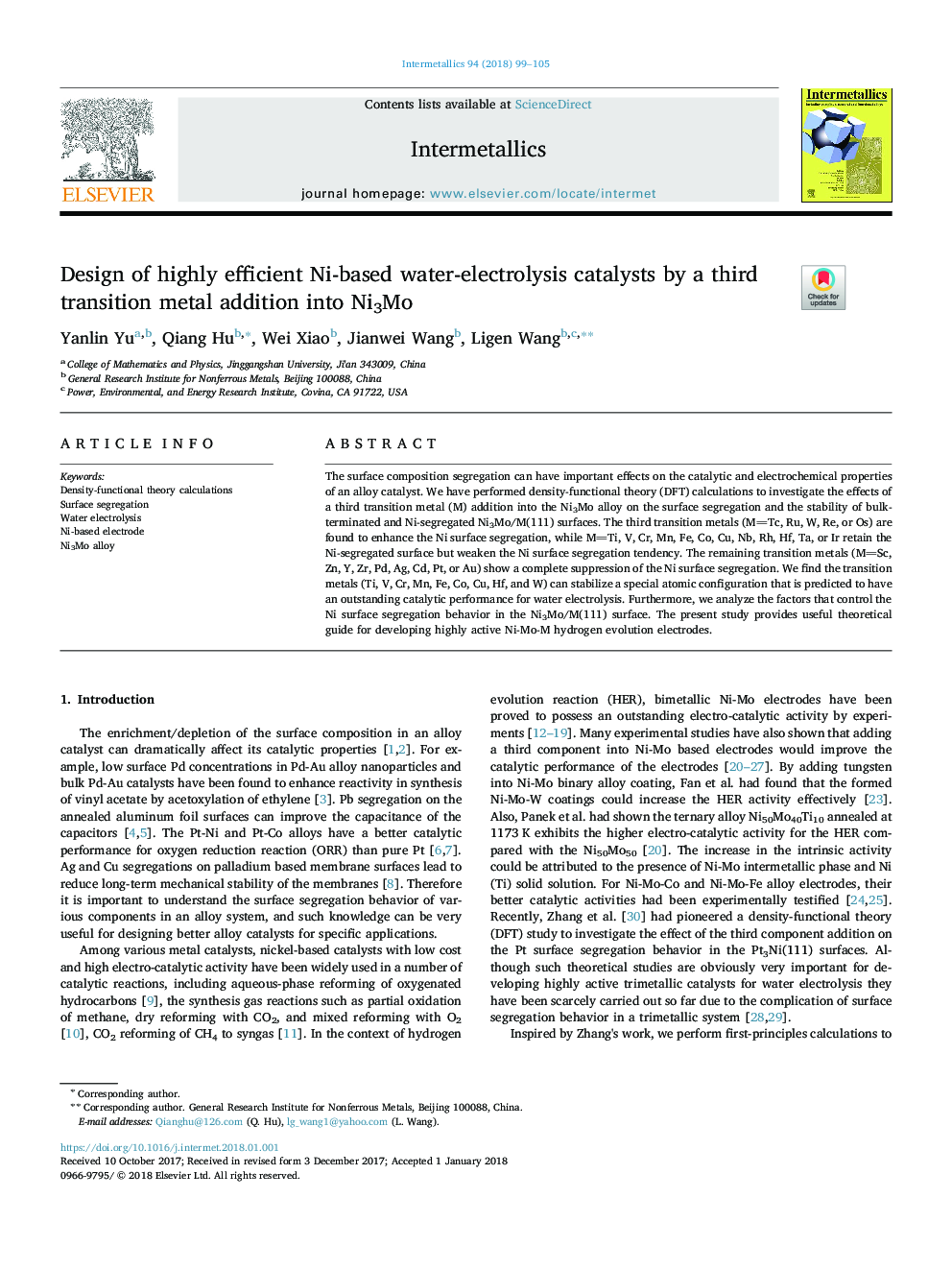| Article ID | Journal | Published Year | Pages | File Type |
|---|---|---|---|---|
| 7988374 | Intermetallics | 2018 | 7 Pages |
Abstract
The surface composition segregation can have important effects on the catalytic and electrochemical properties of an alloy catalyst. We have performed density-functional theory (DFT) calculations to investigate the effects of a third transition metal (M) addition into the Ni3Mo alloy on the surface segregation and the stability of bulk-terminated and Ni-segregated Ni3Mo/M(111) surfaces. The third transition metals (MTc, Ru, W, Re, or Os) are found to enhance the Ni surface segregation, while MTi, V, Cr, Mn, Fe, Co, Cu, Nb, Rh, Hf, Ta, or Ir retain the Ni-segregated surface but weaken the Ni surface segregation tendency. The remaining transition metals (MSc, Zn, Y, Zr, Pd, Ag, Cd, Pt, or Au) show a complete suppression of the Ni surface segregation. We find the transition metals (Ti, V, Cr, Mn, Fe, Co, Cu, Hf, and W) can stabilize a special atomic configuration that is predicted to have an outstanding catalytic performance for water electrolysis. Furthermore, we analyze the factors that control the Ni surface segregation behavior in the Ni3Mo/M(111) surface. The present study provides useful theoretical guide for developing highly active Ni-Mo-M hydrogen evolution electrodes.
Related Topics
Physical Sciences and Engineering
Materials Science
Metals and Alloys
Authors
Yanlin Yu, Qiang Hu, Wei Xiao, Jianwei Wang, Ligen Wang,
